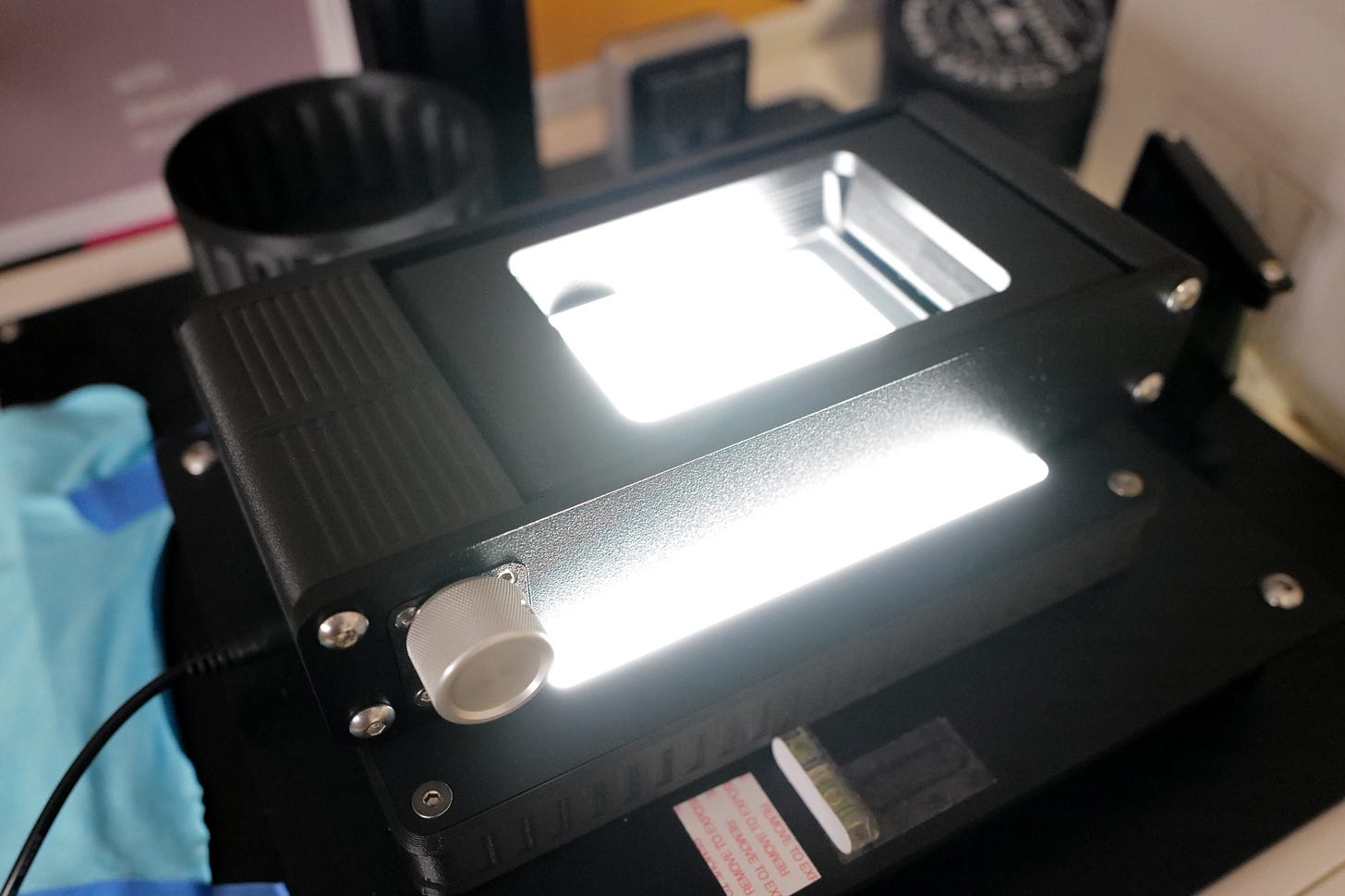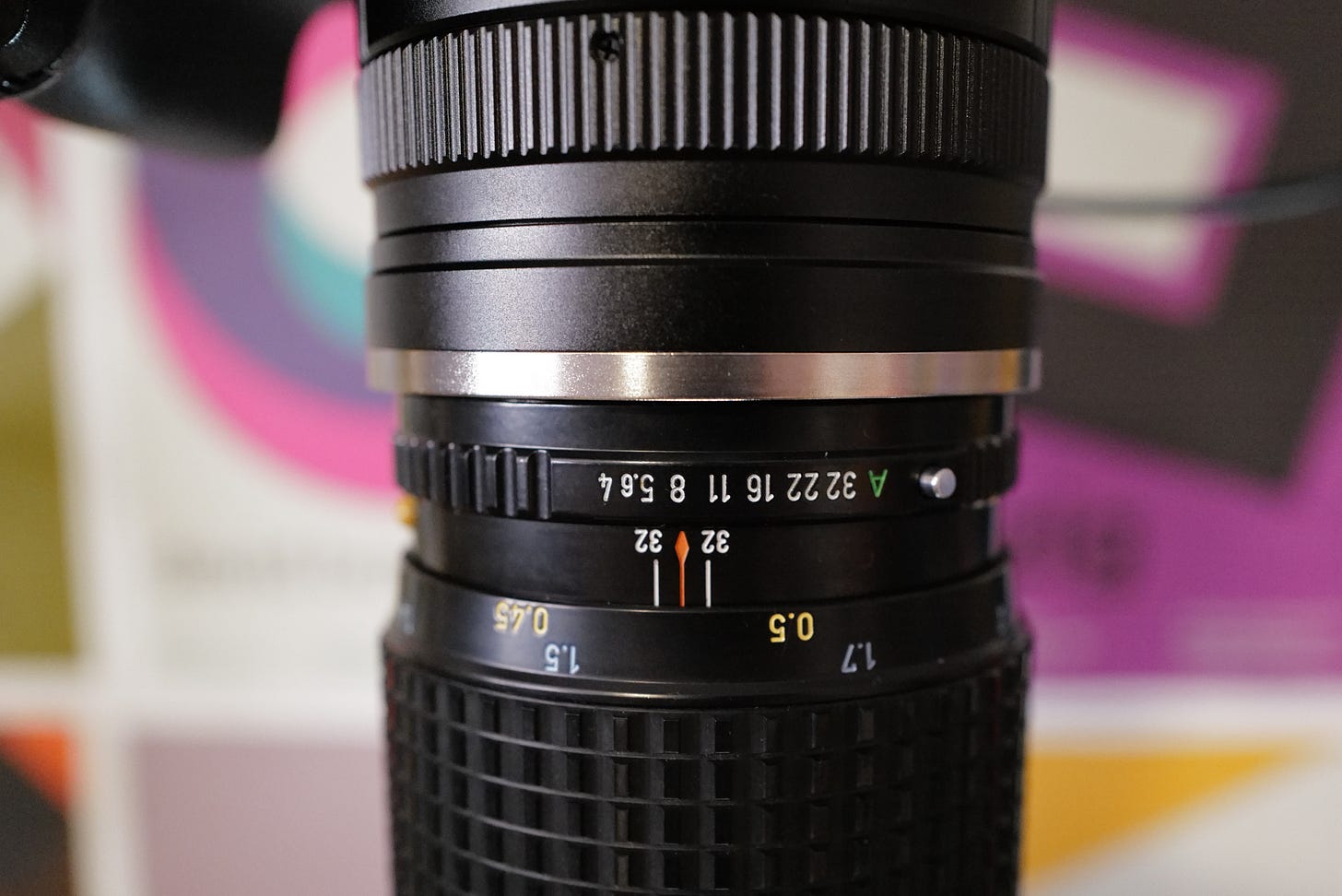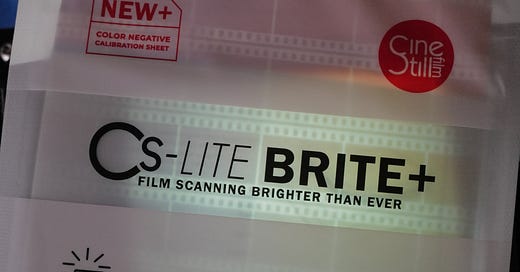CineStill's CS-Litebrite+ Light Enhancement Sheets
Is it a gimmick? Does it really enhance anything? Well, I tested it, and here are the results...
These days, CineStill announced a bunch of Lightroom presets the CineStill CS Negative+ Convert Tools to facilitate negative conversion right out Adobe Lightroom.
The fundamental differences between the new conversion tools and Negative Lab Pro (the most popular piece of software for that task so far) are:
Negative Lab Pro is a plug-in for Lightroom Classic, while the new CineStill’s conversion tool runs and benefits from the faster Lightroom CC’s engine, including mobile.
It is free (review here soon).
With that announcement, CineStill brought people like me to their website, and as you will see, they took the chance link up another product of them that I wasn’t aware of, I am talking about the CineStill CS-Litebrite+ Light Enhancement Sheets.
These are some sheets of a plastic material that you put on top of the light source to increase its efficiency. Light sources are a fundamental piece for doing camscanning1 (also known as mirrorless scanning).

The question is: does it work? Is it a gimmick?
I’ll be short here because I hate these internet guys who make 15 min videos to talk about something that could me told in 15 seconds.
Yes, it works. Go there and buy it, it’s the best twenty bucks you can spend to upgrade your camera scanning game.
In my tests, I gained 2/3 f-stops when compared to use nothing on top of the light source, that’s a lot!
The kit also comes with a blue gelatin to put on top, which according to them, kinda calibrates the stuff out for their Lightroom presets.
It’s so nice to see that CineStill is investing in camera scanning stuff!
How does it work? What’s the wizardry?
Intrigued by its ingenuity, I researched, and here’s how it works if you’re interested:
The CineStill CS-Litebrite+ sheets work by collimating light, meaning they align light rays into a more parallel, focused beam to reduce diffusion and hotspots during film scanning. Technically, these sheets are optical enhancement films, often made from micro-lens or prismatic layers that redirect scattered light into a uniform direction. This helps create more even backlighting for camera scanning.
Despite sounding like new tech, this isn't some photographic wizardry. Light collimation sheets have been used for decades in medical equipment, especially in X-ray illuminators and surgical lighting, to ensure clarity and reduce glare. CineStill has simply adapted this proven optical technology to improve photographic workflows ¯\_(ツ)_/¯ .
I’m happy now that either I can move from 1/30sec to at least 1/60sec, or closing the aperture even more, which would help me with sharpness and focus.

Thanks for reading so far, if you like this post, please share with your Substack network, it would help me a lot!
Or even better, consider subscribing :)
Camera scanning is a technique for digitizing film negatives using a digital camera, a macro lens, and a consistent light source, typically a light table or panel. Instead of using traditional flatbed or dedicated film scanners, this method captures high-resolution RAW images of each film frame, offering faster workflows, greater dynamic range, and more control over color and sharpness, it wouldn’t be a thing if scanner and software weren’t horrible, outdated, and slow.









Ah. That makes sense. I was really curious how these worked... because... curiosity and general physics... but yes, collimation could probably get an extra stop or two. Interesting. I would want to test them at different angles then. Haha.
This would be something I would get if I did camscanning 😜. It's cool that Cinestill is making new products, specially now that Kodak will sell Vision without jemret 💀. I love that you kept the review short, Raf. I hate those videous you talk about!